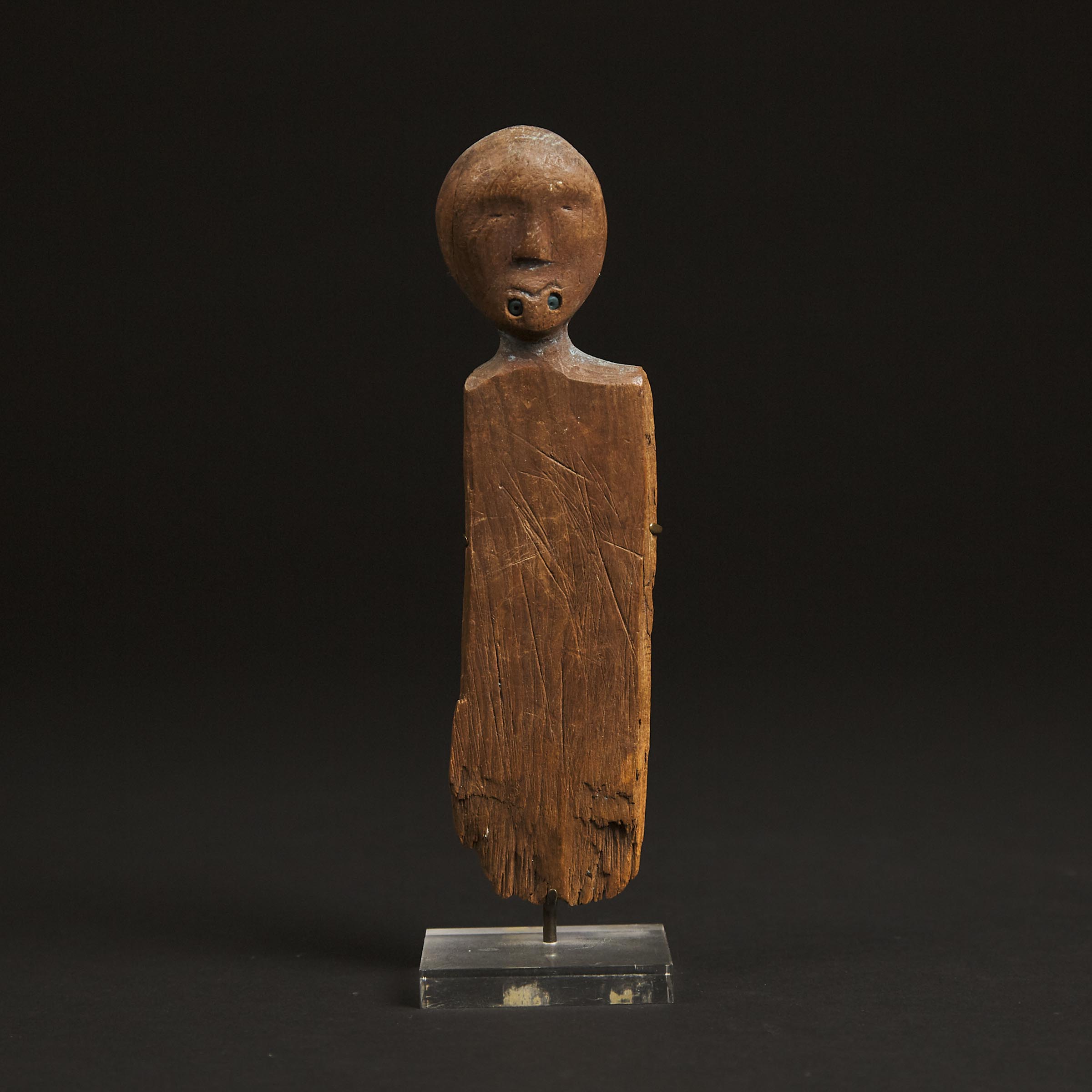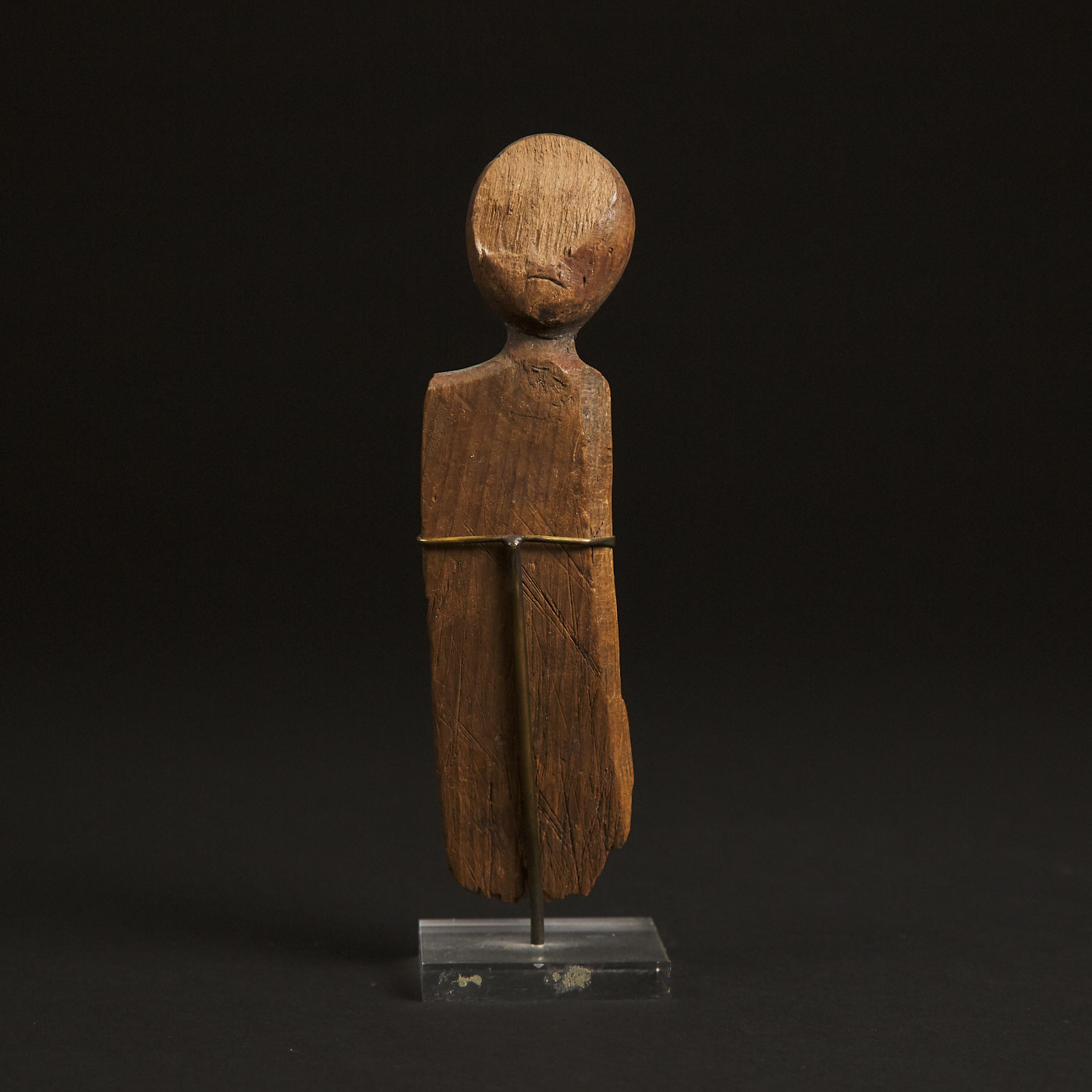Lot 5
Figure Yupik, Sivuqaq (St. Lawrence Island), Pre-1900

Additional Images

Provenance:
Bill Johnstone collection, Carlisle, UK
Note:
Wooden human or humanoid carvings among the peoples of the Bering Sea region are often referred to as dolls, and yet many exhibit characteristics that suggest religious or ceremonial significance. Small human or humanoid figures among the Alaskan Yupik are noted for their use in fertility rituals, as stand ins for people away from villages during festivals, and in hunting and fishing ceremonies. [1]
The present example is particularly notable for its janus-faced head. One side of the carving bears a distinctive male visage distinguished by the presence of two symmetrical labrets and also by the characteristic upturned mouth associated with men in historic Bering Sea imagery. The opposing face has been largely shorn away but the bottom portion showing the downturned frowning mouth associated with images of women remains. It has been suggested that the common occurrence of male and female faces in combination in Bering Sea art indicate that they served as charms, male and female spirits in the Bering Sea cosmology. [2]
(1) Fitzhugh, William W. and Susan A. Kaplan, Inua, (Washington: Smithsonian Institute Press, 1982), 156.
(2) Ibid.,192.


